- The History of Bamia
- The Origins and Spread of Bamia
- Benefits of Bamia
- Nutritional Benefits of Bamia
- A Rich Source of Vitamins and Minerals
- Traditional Bamia Recipes
- 1. Bamia Stew
- 2. Bamia with Lamb
- 3. Bamia Salad
- Delicious and Healthy Ways to Cook Bamia
- 1. Okra Stew:
- 2. Roasted Bamia:
- 3. Sautéed Bamia:
- 4. Pickled Bamia:
- 5. Bamia Salad:
- Health Benefits of Consuming Bamia
- The Impact of Bamia on Digestion and Weight Loss
- Improved Digestion
- Weight Loss Aid
- How to Incorporate Bamia into Your Diet
- Conclusion
- Growing Your Own Bamia
- 1. Choose the right spot
- 2. Prepare the soil
- 3. Planting the seeds
- 4. Watering and maintenance
- 5. Providing support
- 6. Harvesting
- 7. Pest and disease control
- 8. Enjoying the fruits of your labor
- Tips for Successfully Cultivating Bamia at Home
- Choose the Right Variety
- Prepare the Soil
- Planting and Spacing
- Watering and Fertilizing
- Mulching and Weeding
- Sunlight and Temperature
- Pest and Disease Control
- Harvesting
- Storing and Using
- “Question-Answer”
- What is bamia?
- Where is bamia commonly grown?
- What are the health benefits of bamia?
- How can bamia be cooked?
- What does bamia taste like?
- Can bamia be eaten raw?
- Are there any precautions to take when eating bamia?
- “Video” A Magical Green Witch Garden
Bamia, also known as okra, is a versatile vegetable that has been captivating taste buds and minds around the world for centuries. With its unique shape and texture, bamia adds a touch of magic to any dish it graces. From its tender pods to its flavorful seeds, this enchanting vegetable offers a plethora of delightful culinary experiences.
One of the reasons bamia is so beloved is its ability to hold its own in a wide range of cuisines. Whether it is used in traditional African stews, Indian curries, or Southern American gumbo, the flavors and textures of bamia always shine through. Its mucilaginous texture, often the subject of debate among food enthusiasts, adds a certain charm to any dish it is a part of.
Not only does bamia bring its own unique character to the table, but it is also a nutritional powerhouse. Packed with vitamins, minerals, and antioxidants, bamia is not only delicious but also beneficial for your health. It is a great source of fiber and is known to promote healthy digestion. Additionally, bamia contains high levels of vitamin C, which can help boost your immune system and give you an extra dose of energy.
Whether you are a seasoned bamia enthusiast or just discovering this magical vegetable, there are countless recipes and cooking techniques to explore. So why not embrace the enchantment of bamia and embark on a culinary adventure that will transport your taste buds to new and exciting realms of flavor?
The History of Bamia
Bamia, also known as okra, is a vegetable that has a rich history spanning thousands of years. It is believed to have originated in ancient Egypt and has been cultivated and consumed in various parts of the world ever since.
The first evidence of bamia cultivation dates back to around 3500 BC in ancient Egypt. The ancient Egyptians not only grew bamia for its edible pods but also used the plant for medicinal purposes. They believed that it had healing properties and used it to treat various ailments.
From Egypt, bamia spread to other parts of the world, including the Middle East, Africa, and Asia. It became a popular vegetable in many cuisines, where it was used in a variety of dishes ranging from soups and stews to stir-fries and curries.
During the Islamic Golden Age, bamia was introduced to Europe by Arab traders and travelers. It quickly gained popularity in the Mediterranean region, where it was incorporated into local dishes and became a staple ingredient.
Today, bamia is widely cultivated and consumed in many countries around the world. It is appreciated for its unique taste and texture, as well as its nutritional value. Bamia is rich in vitamins, minerals, and fiber, making it a healthy addition to any diet.
Over the centuries, bamia has not only played a significant role in culinary traditions but has also become a symbol of cultural exchange and diversity. Its history is a testament to the power of food to connect people and bridge cultures.
The Origins and Spread of Bamia
Bamia, also known as okra, has a rich history that dates back thousands of years. The exact origins of this delightful vegetable are uncertain, but it is believed to have originated in Africa, specifically in the regions of Ethiopia and Sudan. From there, it spread to other parts of Africa and the Middle East.
Bamia was first introduced to Europe in the 12th century, during the Islamic Golden Age, through trade routes established between the Arab world and the European continent. It quickly gained popularity in Mediterranean countries like Greece, Spain, and Italy, where it became an important ingredient in regional cuisines.
During the era of European colonialism, bamia found its way to the Americas, where it thrived in the warmer climates of the Caribbean, Central America, and the southern United States. Today, it is an integral part of many Latin American dishes, such as gumbo in Creole cuisine and calaloo in Caribbean cuisine.
The popularity of bamia continued to spread throughout the world, and it is now cultivated in many countries, including India, China, Japan, and Australia. Its versatility in cooking, unique taste, and nutritional value have made it a beloved vegetable in various culinary traditions across the globe.
Benefits of Bamia
Bamia is not only delicious but also packed with nutrients. It is a good source of dietary fiber, vitamin C, and minerals like potassium and magnesium. It is known for its high antioxidant content, which helps fight inflammation and supports overall health.
Furthermore, bamia contains a mucilaginous substance that provides digestive benefits. It helps soothe the digestive tract, promotes regular bowel movements, and can even prevent constipation. Additionally, the dietary fiber in bamia can help regulate blood sugar levels and lower cholesterol.
Nutritional Benefits of Bamia
Bamia, also known as okra or lady finger, is a vegetable that is not only delicious but also packed with nutrition. This versatile vegetable offers a range of health benefits that make it a great addition to your diet. Below are some of the nutritional benefits of bamia:
- High in Fiber: Bamia is rich in dietary fiber, which is essential for a healthy digestive system. It helps to regulate bowel movements, prevent constipation, and maintain a healthy weight.
- Good Source of Vitamins and Minerals: Bamia contains vitamins A, C, and K, as well as minerals such as calcium and magnesium. These nutrients are important for maintaining strong bones, boosting the immune system, and promoting overall health.
- Rich in Antioxidants: Bamia is a good source of antioxidants, which help to protect cells from damage caused by free radicals. Antioxidants play a role in preventing chronic diseases such as heart disease and cancer.
- Low in Calories: Bamia is a low-calorie vegetable, making it a great choice for those who are watching their weight. It can be included in a balanced diet without adding too many calories.
- May Help Lower Cholesterol: Some studies have suggested that bamia may have a positive effect on cholesterol levels. It contains soluble fiber that can help reduce total and LDL cholesterol levels.
- Beneficial for Blood Sugar Control: Bamia has been found to have a low glycemic index, meaning that it does not cause a rapid increase in blood sugar levels. This can be beneficial for those with diabetes or those at risk of developing the condition.
With its rich nutritional profile, bamia is a vegetable that not only adds flavor to your meals but also contributes to your overall health and well-being. So, why not incorporate this magical and enchanting vegetable into your diet today?
A Rich Source of Vitamins and Minerals
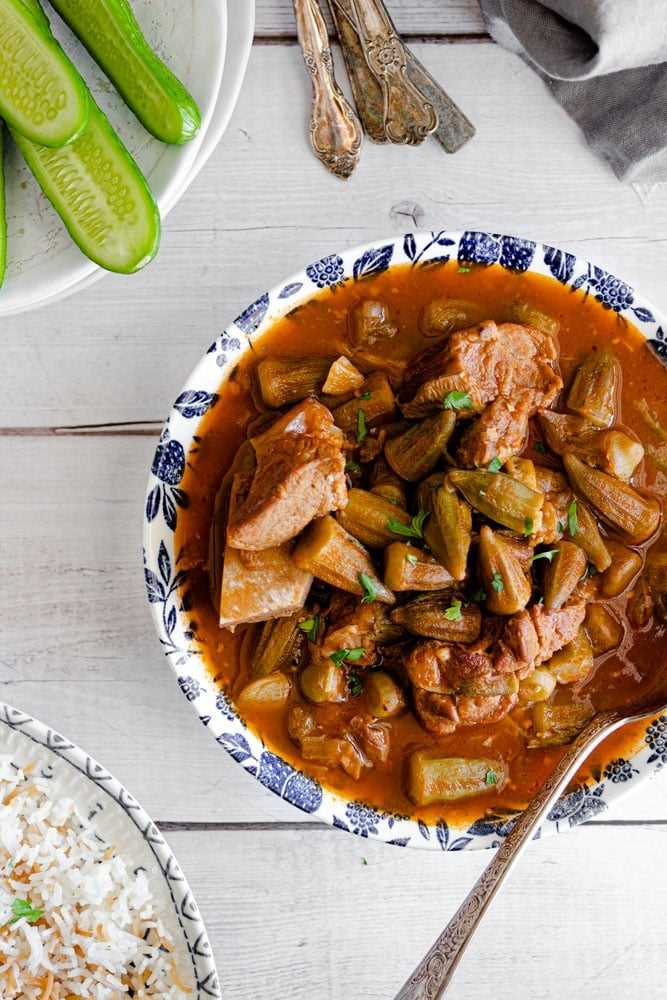
Bamia, also known as okra, is a vegetable that is packed with essential vitamins and minerals. It is an excellent source of vitamin C, vitamin K, and folate. These vitamins play a crucial role in the body’s overall health and wellbeing.
Vitamin C is an antioxidant that helps protect cells from damage caused by free radicals. It also plays a vital role in collagen production, which helps maintain healthy skin, blood vessels, and bones. Adding bamia to your diet can help boost your vitamin C intake and support your immune system.
Vitamin K is essential for blood clotting and bone health. It helps the body produce proteins that are necessary for these functions. Incorporating bamia into your meals can help ensure you are getting enough vitamin K to maintain healthy bones and prevent excessive bleeding.
Folate, also known as vitamin B9, is necessary for the production of red blood cells and DNA. It is especially important for pregnant women, as it helps prevent neural tube defects in developing fetuses. Bamia can be a great addition to a pregnancy diet to ensure an adequate intake of folate.
In addition to these vitamins, bamia is a good source of minerals such as magnesium, potassium, and calcium. Magnesium is essential for more than 300 biochemical reactions in the body, including energy production and muscle function. Potassium helps regulate blood pressure and supports heart health. Calcium is vital for strong bones and teeth.
By including bamia in your meals, you can reap the benefits of its rich vitamin and mineral content while enjoying its unique texture and flavor. Whether you add it to stews, soups, or stir-fries, this enchanting vegetable is sure to enhance your culinary experience and provide you with essential nutrients.
Traditional Bamia Recipes
1. Bamia Stew
This traditional Arabic stew is made with tender bamia pods cooked in a flavorful tomato sauce. Here’s how to make it:
- Ingredients:
- 1 pound bamia pods
- 1 pound stewing beef, cubed
- 1 onion, chopped
- 3 cloves of garlic, minced
- 2 tablespoons tomato paste
- 4 cups beef broth
- 1 teaspoon ground cumin
- 1 teaspoon ground coriander
- Salt and pepper to taste
- Vegetable oil
- Instructions:
- Heat some vegetable oil in a large pot over medium heat.
- Add the chopped onion and minced garlic. Cook until they become fragrant and translucent.
- Add the cubed beef and cook until browned on all sides.
- Add the tomato paste, ground cumin, ground coriander, salt, and pepper. Stir well to coat the meat.
- Add the beef broth and bring to a boil. Reduce the heat and let it simmer for about 1 hour, or until the meat is tender.
- Add the bamia pods and continue to simmer for an additional 30 minutes, or until the bamia is cooked through.
- Adjust the seasoning if necessary and serve hot with rice or bread.
2. Bamia with Lamb
This Egyptian dish combines tender lamb meat with bamia pods, creating a delicious and hearty meal. Here’s the recipe:
- Ingredients:
- 1 pound lamb meat, cubed
- 1 pound bamia pods
- 1 onion, chopped
- 3 cloves of garlic, minced
- 2 tablespoons tomato paste
- 4 cups lamb or vegetable broth
- 1 teaspoon ground cinnamon
- 1 teaspoon ground cumin
- Salt and pepper to taste
- Vegetable oil
- Instructions:
- In a large pot, heat some vegetable oil over medium heat.
- Add the chopped onion and minced garlic. Cook until they become fragrant and translucent.
- Add the cubed lamb meat and cook until browned on all sides.
- Add the tomato paste, ground cinnamon, ground cumin, salt, and pepper. Stir well to coat the meat.
- Pour in the lamb or vegetable broth and bring to a boil. Reduce the heat and let it simmer for about 1 hour, or until the meat is tender.
- Add the bamia pods and continue to simmer for an additional 30 minutes, or until the bamia is cooked through.
- Adjust the seasoning if necessary and serve hot with rice or bread.
3. Bamia Salad
This refreshing salad combines bamia pods with fresh vegetables and a tangy dressing. It’s perfect for a light meal or as a side dish. Here’s how to make it:
- Ingredients:
- 1 pound bamia pods
- 1 cucumber, diced
- 1 tomato, diced
- 1 bell pepper, diced
- 1 small red onion, thinly sliced
- 1/4 cup fresh lemon juice
- 2 tablespoons olive oil
- 1 teaspoon ground sumac
- Salt and pepper to taste
- Instructions:
- Blanch the bamia pods in boiling water for 2 minutes. Drain and rinse with cold water to stop the cooking process. Pat dry with a towel.
- In a large bowl, combine the blanched bamia pods, diced cucumber, diced tomato, diced bell pepper, and thinly sliced red onion.
- In a separate small bowl, whisk together the fresh lemon juice, olive oil, ground sumac, salt, and pepper to make the dressing.
- Pour the dressing over the bamia and vegetable mixture. Toss well to combine.
- Let the salad marinate in the refrigerator for at least 30 minutes before serving to allow the flavors to meld together.
- Serve chilled and enjoy!
Delicious and Healthy Ways to Cook Bamia
Bamia, also known as Okra, is a versatile vegetable that can be cooked in a variety of delicious and healthy ways. Whether you prefer it in a stew, roasted, or sautéed, there are countless recipes to explore. Here are a few ideas to get you started:
1. Okra Stew:
One of the most popular ways to cook bamia is in a stew. Start by sautéing onions and garlic in olive oil until they’re soft and fragrant. Add chopped tomatoes, tomato paste, and your favorite spices (such as cumin, coriander, and paprika). Let the mixture simmer for a few minutes before adding the bamia. Cook on low heat until the bamia is tender and the flavors have melded together. Serve with rice or bread for a satisfying meal.
2. Roasted Bamia:
If you’re looking for a healthy and flavorful way to enjoy bamia, try roasting it in the oven. Start by trimming the ends of the bamia and tossing it with olive oil, salt, and pepper. Spread the bamia in a single layer on a baking sheet and roast at 425°F (220°C) for about 15-20 minutes, or until the bamia is tender and slightly crispy. This method brings out the natural sweetness of the bamia and adds a delicious caramelized flavor.
3. Sautéed Bamia:
Sautéed bamia is a quick and easy way to enjoy this flavorful vegetable. Start by heating a little olive oil in a skillet over medium heat. Add sliced bamia and cook, stirring occasionally, until it is tender and lightly browned. Season with salt, pepper, and your preferred herbs or spices. Sautéed bamia is a great side dish that pairs well with grilled meats or as a topping for salads or pasta dishes.
4. Pickled Bamia:
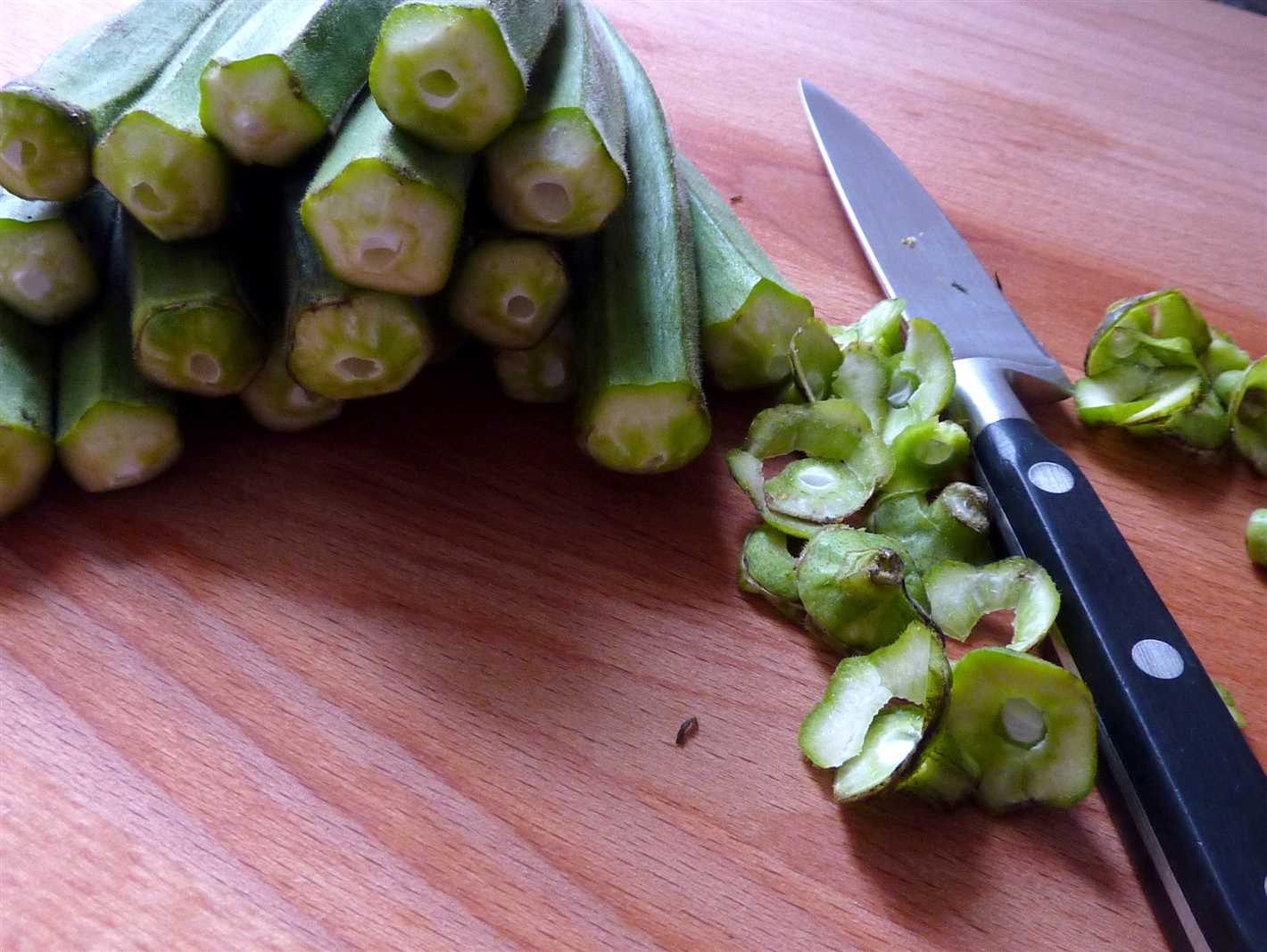
If you’re looking for a unique and tangy way to enjoy bamia, try pickling it. Start by trimming the ends of the bamia and placing it in a jar with vinegar, water, salt, sugar, and your favorite spices (such as mustard seeds, garlic, and dill). Let the bamia marinate in the refrigerator for at least a day before enjoying. Pickled bamia adds a delicious crunch and tanginess to salads, sandwiches, or as a snack on its own.
5. Bamia Salad:
If you prefer your bamia raw, try using it in a salad for a refreshing and healthy dish. Combine sliced bamia with chopped tomatoes, cucumbers, onions, and fresh herbs (such as parsley and mint). Dress the salad with lemon juice, olive oil, salt, and pepper. Allow the flavors to marinate for a few minutes before serving. Bamia salad is a great accompaniment to grilled fish or meat, or can be enjoyed as a light lunch on its own.
These are just a few ideas to inspire you to explore the magical delights of bamia. Whether you’re a seasoned cook or just starting out in the kitchen, bamia is a versatile and delicious vegetable that is sure to delight your taste buds.
Health Benefits of Consuming Bamia
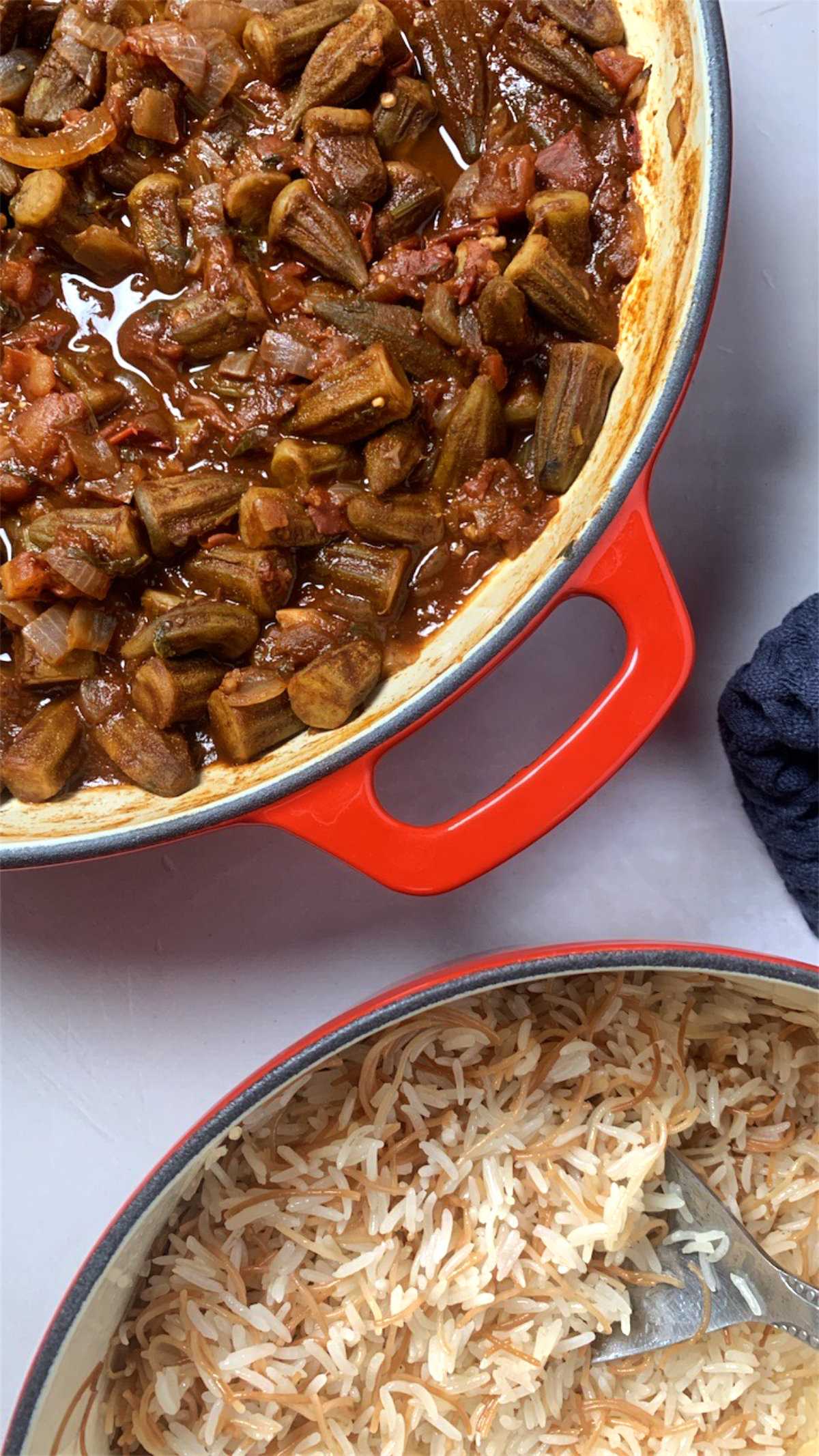
1. Nutritional Value:
Bamia, also known as okra or lady’s finger, is a highly nutritious vegetable. It is low in calories and rich in fiber, vitamins A, C, and K, and minerals such as calcium, magnesium, and potassium.
2. Digestive Health:
One of the main health benefits of bamia is its high fiber content, which aids digestion and prevents constipation. The fiber also promotes a healthy gut by nourishing beneficial gut bacteria.
3. Heart Health:
Bamia contains antioxidants and polyphenols that help reduce inflammation and prevent oxidative stress in the cardiovascular system. This can lower the risk of heart disease.
4. Blood Sugar Control:
The soluble fiber in bamia helps regulate blood sugar levels and improves insulin sensitivity, making it beneficial for individuals with diabetes or those at risk of developing it.
5. Immune System Support:
Bamia is a good source of vitamin C, which boosts the immune system and helps the body fight off infections and diseases.
6. Bone Health:
The vitamin K content in bamia is important for maintaining healthy bones and preventing conditions such as osteoporosis. It helps in the production of osteocalcin, a protein essential for bone strength.
7. Skin Health:
Bamia is rich in antioxidants that help protect the skin against damage from free radicals and promote a healthy complexion. It also contains vitamin A, which is essential for maintaining skin health.
8. Weight Management:
Due to its low calorie and high fiber content, bamia can be a beneficial addition to a weight management diet. It provides a feeling of fullness and helps control appetite.
9. Anti-Cancer Properties:
Studies have shown that bamia contains compounds that have anti-cancer properties. These compounds can help inhibit the growth of certain cancer cells and protect against oxidative damage.
10. Eye Health:
Bamia is a good source of vitamin A and antioxidants, such as lutein and zeaxanthin, which are essential for maintaining good vision and preventing age-related macular degeneration.
| Nutrient | Amount |
|---|---|
| Calories | 33 |
| Carbohydrates | 7g |
| Fiber | 3.2g |
| Protein | 2g |
| Fat | 0.2g |
| Vitamin A | 23% of the Daily Value |
| Vitamin C | 38% of the Daily Value |
| Vitamin K | 31% of the Daily Value |
| Calcium | 8% of the Daily Value |
| Magnesium | 14% of the Daily Value |
| Potassium | 7% of the Daily Value |
The Impact of Bamia on Digestion and Weight Loss
Bamia, also known as lady’s fingers or okra, is not only a delicious vegetable but also has numerous health benefits. One of the major benefits of bamia is its positive impact on digestion and weight loss.
Improved Digestion
Bamia is rich in dietary fiber, which plays a crucial role in promoting healthy digestion. The fiber adds bulk to the stool, making it easier to pass through the digestive tract and preventing constipation. It also helps stimulate the peristaltic motion of the intestines, aiding in regular bowel movements.
Additionally, bamia contains a mucilaginous substance called okra mucilage. This substance helps lubricate the intestines, reducing the chances of inflammation and improving the overall health of the digestive system.
Weight Loss Aid
Due to its high fiber content, bamia can help with weight loss efforts. The fiber in bamia helps you feel fuller for longer, reducing overall calorie intake throughout the day. It also slows down the digestion process, keeping you satisfied and preventing excessive snacking.
Bamia also contains a compound called flavonoids, which have been found to have anti-obesity effects. These compounds can help regulate lipid metabolism and inhibit the accumulation of fat cells.
How to Incorporate Bamia into Your Diet
Here are some delicious and healthy ways to incorporate bamia into your diet:
- Add bamia to soups and stews for a nutritious boost.
- Sauté bamia with garlic and olive oil for a flavorful side dish.
- Grill or roast bamia for a crispy and healthy snack.
- Include bamia in stir-fries for a nutritious and colorful addition.
Remember to cook bamia quickly to preserve its nutrients and avoid overcooking, as it can become slimy.
Conclusion
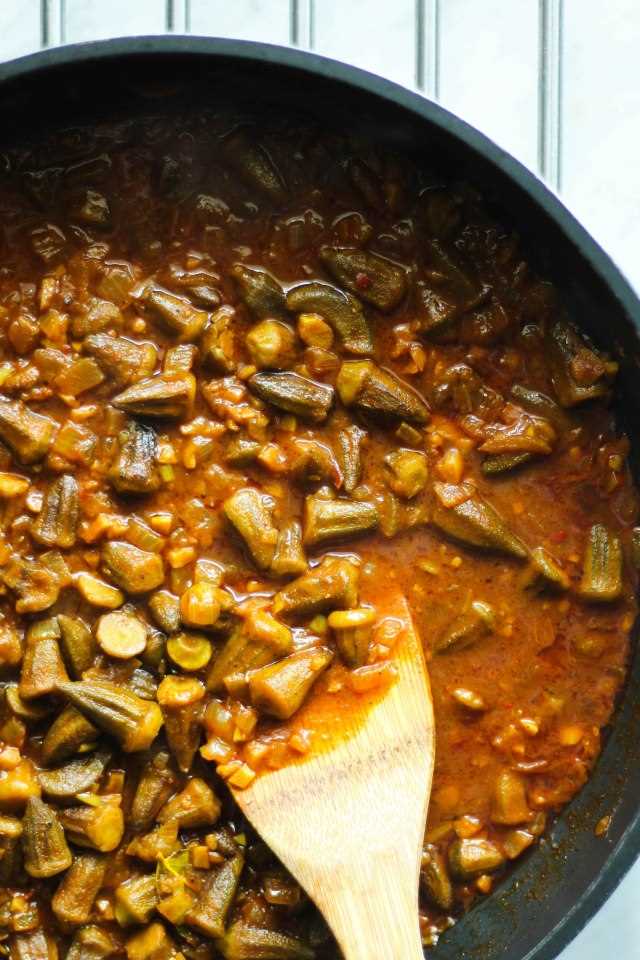
Bamia has a positive impact on digestion and weight loss, thanks to its high fiber content and other beneficial compounds. By incorporating bamia into your diet, you can promote a healthy digestive system and support your weight loss goals. So why not try this enchanting vegetable and experience its magical delights?
Growing Your Own Bamia
Growing your own bamia can be a rewarding and enjoyable experience. Not only can you savor the flavors of this enchanting vegetable, but you can also take pride in cultivating it with your own hands. Here are some tips to help you get started.
1. Choose the right spot
Bamia thrives in sunny locations, so choose a spot in your garden that receives at least 6-8 hours of direct sunlight daily. Make sure the soil is well-draining and rich in organic matter.
2. Prepare the soil
Before planting bamia, prepare the soil by removing any weeds and rocks. Loosen the soil using a garden fork or tiller and incorporate compost or well-rotted manure to improve its fertility and structure.
3. Planting the seeds
Sow the bamia seeds directly into the soil, spacing them about 18-24 inches apart. The seeds should be planted about 1 inch deep. Water the soil gently after planting to ensure good seed-to-soil contact.
4. Watering and maintenance
Keep the soil evenly moist but not waterlogged throughout the growing season. Water the plants deeply once a week, especially during dry periods. Mulching around the plants can help conserve moisture and suppress weed growth.
5. Providing support
Bamia plants can grow quite tall, so it is a good idea to provide them with support. Use stakes or trellises to prevent the plants from bending or breaking under the weight of the fruits.
6. Harvesting
Bamia pods are ready to be harvested when they reach about 2-3 inches in length. Harvest them regularly, as this will promote continued production. Use a sharp pair of scissors or a knife to cut the pods from the plant.
7. Pest and disease control
Keep an eye out for common pests like aphids, snails, and slugs, as well as diseases like powdery mildew. Regularly inspect the plants and take appropriate measures, such as handpicking pests or using organic pest control methods.
8. Enjoying the fruits of your labor
Once you have harvested your bamia pods, it’s time to enjoy them! Bamia can be used in a variety of dishes, from soups and stews to stir-fries and salads. Get creative in the kitchen and savor the magical delights of this enchanting vegetable.
| Choose a sunny spot in your garden | Prepare the soil with compost or manure |
| Plant the seeds about 1 inch deep, spacing them 18-24 inches apart | Water regularly and deeply |
| Provide support for the plants to prevent bending or breaking | Harvest the pods when they reach 2-3 inches in length |
| Monitor for pests and diseases and take appropriate action | Enjoy your bamia in a variety of dishes |
Tips for Successfully Cultivating Bamia at Home
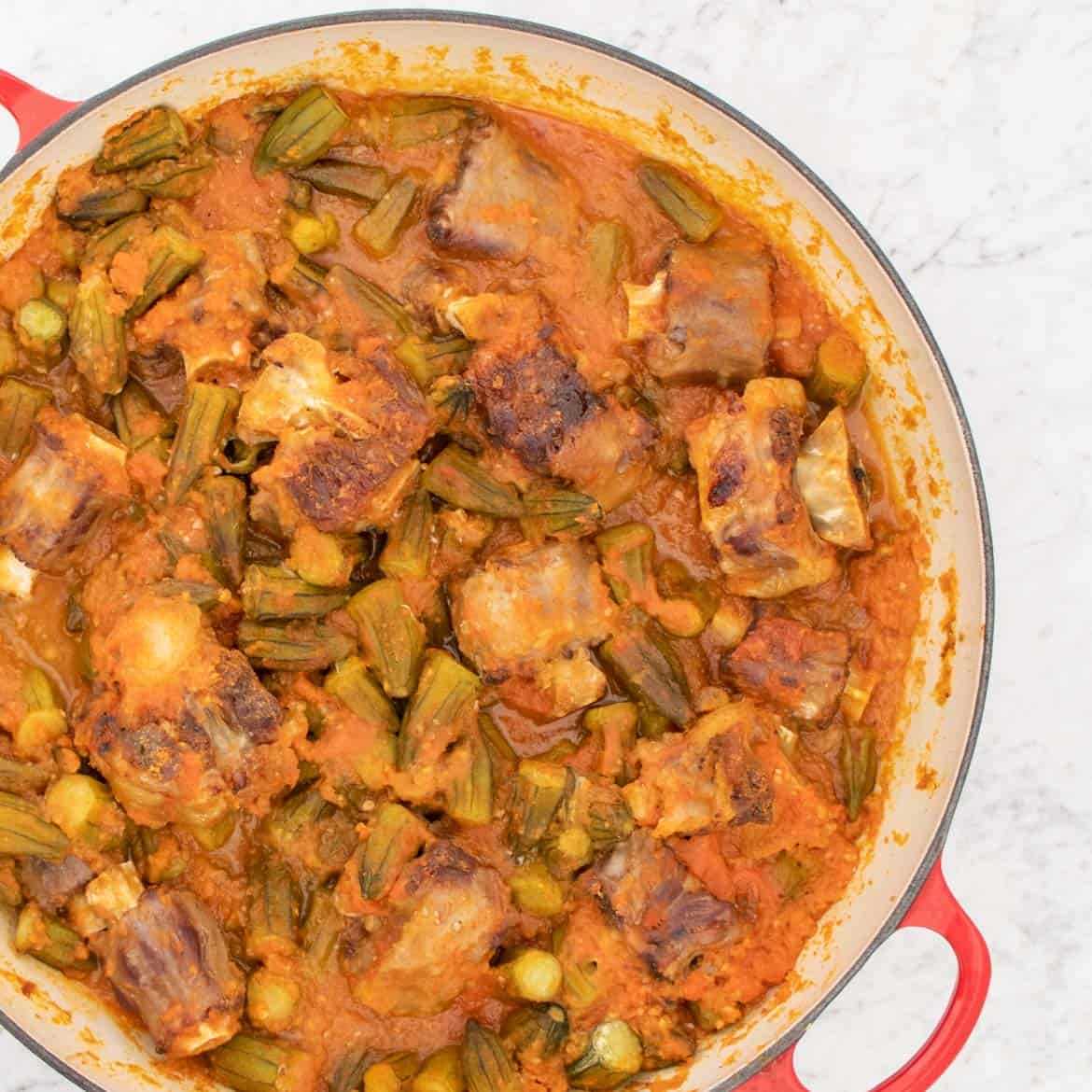
Choose the Right Variety
There are several varieties of bamia available, so it’s important to choose the one that is best suited for your climate and growing conditions. Some popular varieties include Clemson Spineless, Emerald, and Louisiana Green Velvet. Research the different varieties and choose the one that will thrive in your area.
Prepare the Soil
Bamia plants prefer well-draining soil with a pH level between 6.0 and 6.8. Before planting, amend your soil with organic matter such as compost or aged manure to improve its fertility and moisture-retention capabilities. Ensure that the soil is loose and friable to allow for good root development.
Planting and Spacing
Bamia can be directly sown into the ground or started indoors as seedlings. If starting indoors, plant the seeds in small pots about 4-6 weeks before the last frost date. Transplant the seedlings outdoors after all danger of frost has passed. Space the plants about 18-24 inches apart to allow for adequate airflow and prevent overcrowding.
Watering and Fertilizing
Keep the soil consistently moist but not waterlogged. Water deeply and thoroughly, especially during dry spells or when the plants are flowering and fruiting. Avoid overhead watering as it can increase the risk of fungal diseases. Fertilize the plants every 3-4 weeks with a balanced organic fertilizer to promote healthy growth and fruit production.
Mulching and Weeding
Apply a layer of organic mulch around the base of the plants to suppress weeds, conserve moisture, and regulate soil temperatures. Keep the area around the plants free from weeds, as they can compete for nutrients and water.
Sunlight and Temperature
Bamia plants require full sun to grow and produce a good harvest. Choose a location that receives at least 6-8 hours of direct sunlight per day. They prefer warm temperatures and will not tolerate frost. Plant them outdoors after all danger of frost has passed and protect them during cold snaps.
Pest and Disease Control
Inspect your plants regularly for any signs of pests or diseases. Common pests that can affect bamia include aphids, caterpillars, and mites. Use organic pest control methods such as insecticidal soaps or neem oil to manage pest infestations. Fungal diseases such as powdery mildew can be prevented by ensuring good air circulation and avoiding overhead watering.
Harvesting
Bamia pods are ready for harvest when they are tender and about 2-4 inches long. Harvest the pods frequently to promote continuous production. Use a sharp knife or pruners to cut the pods from the plant.
Storing and Using
Store fresh bamia pods in a plastic bag in the refrigerator for up to 1 week. They can also be blanched and frozen for longer storage. Bamia can be used in a variety of recipes, such as stews, soups, stir-fries, and even pickles. Enjoy the delicious and nutritious flavors of bamia in your home-cooked meals!
“Question-Answer”
What is bamia?
Bamia is a vegetable that is commonly known as okra. It is a flowering plant that produces edible green pods.
Where is bamia commonly grown?
Bamia is commonly grown in warm and tropical regions, particularly in countries such as Egypt, India, and Nigeria.
What are the health benefits of bamia?
Bamia is packed with nutrients and provides several health benefits. It is a good source of fiber, vitamins, and minerals. It also contains antioxidants and has anti-inflammatory properties.
How can bamia be cooked?
Bamia can be cooked in various ways. It is commonly used in soups, stews, and stir-fries. It can also be fried or pickled.
What does bamia taste like?
Bamia has a unique flavor. It has a mild taste with a slightly slimy texture when cooked. Some people describe it as a cross between asparagus and green beans.
Can bamia be eaten raw?
While bamia is usually cooked, it can be eaten raw. However, some people find the raw okra to be tough and unpleasant. Cooking helps to soften the vegetable and enhances its flavor.
Are there any precautions to take when eating bamia?
Some people may have an allergic reaction to bamia, especially if they are allergic to other vegetables in the same family, such as cotton or hollyhock. It is also important to wash bamia thoroughly before cooking to remove any dirt or pesticides.







